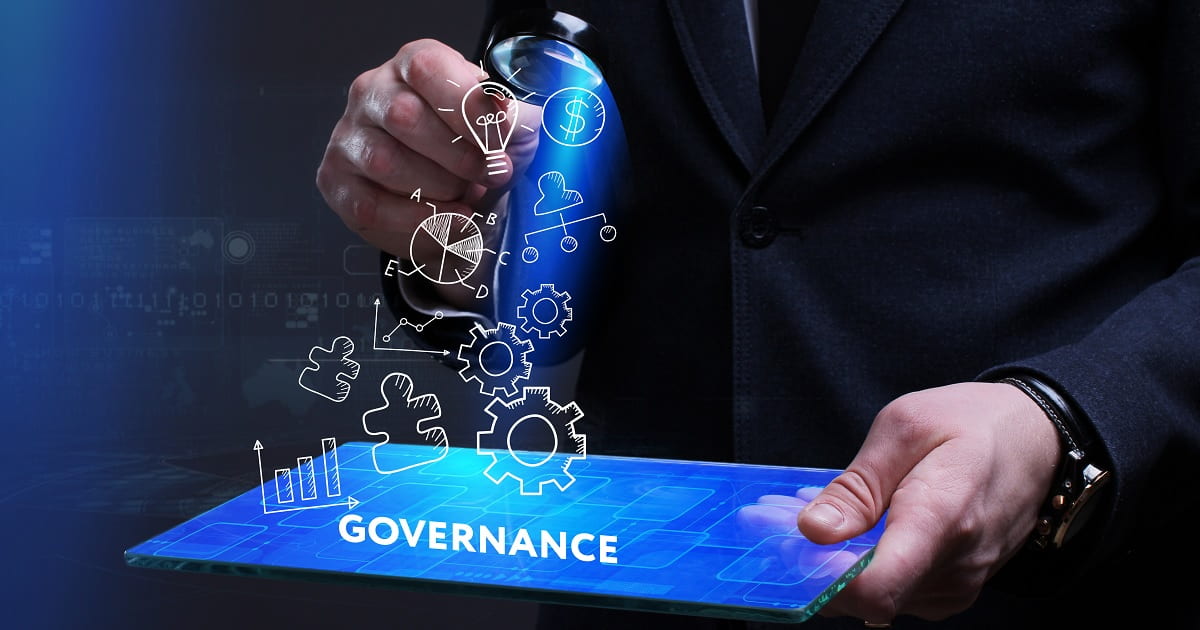
Government Business, Government Finance
Article | July 12, 2022
The United States Patent and Trademark Office (USPTO) issued its 10 millionth patent number in June 2018 and continues to go strong. In fact, according to a PatentlyO.com-published report, “We are about three-fourths of the way through fiscal year 2019 (ends September 30, 2019) and the USPTO is on-track to issue the most patents ever in a single year period,” with the author forecasting, “330,000 issued utility patents, which is up about five percent from the prior one-year high in 2017.” While these kinds of milestones have created much ado about patents that have changed the world, including a number of popular culture pieces, the unfortunate truth remains that a great number of organizations don’t really understand how powerfully advantageous a tool patents can be.
As the pace of patent filings quicken—noting that it took fully 121 years to issue the first million patents but only three years to move from nine to ten million—businesses that understand how to analyze, identify and capitalize on various intellectual property (IP) trends can dramatically hasten and increase value creation, and valuation, within their companies. This is according to patent attorney and IP authority JiNan Glasgow George, a former USPTO patent examiner and engineer turned entrepreneur who launched the Magic Number Patent Forecast software —a comprehensive intelligence tool leveraging machine learning to uncover silent trends sweeping the business landscape, revealing who is filing patents, when and in what sectors. With this kind of AI-driven data, organizations can easily detect early-stage shifts and pinpoint other trends and marketplace insights to give companies a tremendous competitive edge.
“Intellectual property is not just an idea, concept or invention, but rather a financial asset that can render tangible results,” JiNan notes. “Organizations need to shift their mentality away from patents being seen as merely a way to protect their own idea and, instead, regard them as a means to grow a business and create wealth through intellectual property-driven analytics and key business assets that drive revenue. This can include analyzing the competition through a uniquely telling lens, deciding which products to build next, identifying 'white space' industry opportunity and more.”
After more than two decades managing legal matters pertaining to patents and trademarks, JiNan has helped hundreds of entrepreneurs and innovation-based companies understand how to parlay patents into assets that give them an edge. Below are three of her key reasons why analyzing patent trends can pay off in a big way:
1. Enhanced Competitive Intelligence. Did you know that large banking institutions like Bank of America and payment card companies like Mastercard and Visa hold large amounts of patents in cryptocurrency? Or that a pharmaceutical company is the leading patent owner in the cannabis sector? Or that consumer sleep is among the newest IP-heavy categories, with Apple emerging as a primary player? Or that early stage companies such as Luminar may be outpacing automotive giants?
“Because investment in patents always leads market activity, we can see investment trends before they’re visible in market activity,” JiNan explains. “Every sector contains strategic insights that can translate into mission critical assets. We also find evidence of investment that might seem contradictory—like a major bank investing heavily in its supposed competitor: cryptocurrrency. It’s data science that allows companies to predict the next waves of innovation within their particular industries and markets.”
2. Drastically Increased Valuation. IP isn’t just for tech and consumer product companies, as even service businesses can pursue IP protection through patents, trademarks, copyrights and trade secrets. Unfortunately, many businesses are highly undervalued because the owner or executive has not created any IP or cultivated what they have. This is a grave error given that IP plays a huge role in an entity’s valuation. In fact, IP is the one thing that impacts the valuation multiple beyond the profitable business, itself. As such, using trend data to determine with greater accuracy how and where to allocate IP-related resources is key, as “getting it right” can be a significant boon to the bottom line.
“Some start-up companies I’ve worked with have IP portfolios that are more efficient and valuable than large corporations in the same markets,” JiNan notes. “That gives them a high valuation—a vital factor also making these companies attractive targets for investors, mergers and acquisitions. Some companies invest a lot in patents that ultimately are not very valuable, while other companies file for inventions that yield significant returns. The profitable ones can produce impact that multiplies their IP investment—even early stage companies can have IP valuations that are $10 million, $50 million, even $100 million or more. A data-driven IP strategy that considers present inventions in market context can create a five times or more increase in valuation.”
3. Maximized First Mover Advantage. Prior to 2013, the first to invent was entitled to patent rights. The current system—established through the Leahy-Smith America Invents Act—is a “first-to-file” system, meaning that patent rights are given to the first person or entity to file an application whether or not they were the first inventor of the technology, product or service. With access to patent trends and other IP-driven data, companies can not only make smarter investments and develop better strategies to target emerging markets, but also aptly identify underserved or even entirely unexploited facets within those markets.
“Patent data offers huge insight into who is investing in what kind of technology and where and how those funds and efforts are being allocated, long before commercial activity,” JiNan says. “Any company preparing to enter a new market will leave evidence of their intentions in areas that represent opportunity. If you are looking to capitalize on gaps in the market, it’s important to remember there’s no second place in patents—you need trend data to be continuously updated and analyzed. The companies and individuals who profit most from intellectual property are often not the ones who initially created it. ”
According to JiNan, one of the most significant areas of opportunity loss for entrepreneurs and corporate executives is a lack of understanding of patent strategy and undervaluing the pursuit thereof. Because p atents are often the highest value intellectual property assets, she asserts that having an inside track on this kind of activity—and taking proactive measures to interpret and capitalize on that data—can be a real game-changer for an organization.
Ways to gain that “inside track” as well as other ways to maximize patent ROI and profit from your IP endeavors will be explored at the annual Eclipse IP Conference this October in Cary/RTP, North Carolina. Founded in 2013, Eclipse brings together global thought leaders in IP to discuss best practices in patent investment, with this year’s theme being “Own Your Zone, Leveraging IP to Increase Marketshare.” These days, it’s not just about procuring the data. It’s what you strategically do with that data that really counts. The conference includes the likes of New Orleans Saints all-time yardage leading wide receiver Marques Colston, supply chain expert Irfan Khan, Eugene Gold (who grew his business by a staggering 4,400%) and bestselling author Randy Nelson.
With patents among the most important and valuable assets a business can hold, said to serve as “the lifeblood of innovation,” when employed well they can proffer a remarkable return on investment—especially when facilitating market, category or process exclusivity. With JiNan’s insights above, it’s clear that deciphering and mapping early-stage patents and market data can be a powerfully effective means toward this end.
Read More

Emerging Technology, Government Business
Article | October 7, 2022
COVID-19 placed enormous demands on government services—demands that are not likely to go away. Moreover, the private sector now looks to government to facilitate the data transparency, digital processes, and data security needed to fuel recovery. Governments now understand those old ways of doing business no longer work. They need to become agile and flexible to meet today’s needs. Some were moved in that direction by the unexpected demands of the pandemic. For others, COVID-19 simply accelerated their digital transformation journey that was already underway.
Read More

Government Business
Article | July 11, 2022
The average smartphone user should be fully informed about 5G, or have seen dozens of commercials promoting the service. Telecom companies are aggressively pushing it, with some even offering 5G routers and access points for home.
While the federal government has always been interested in 5G and is testing it at several military bases, the technology's consumerization means that agencies must work faster to integrate it into their own networks. Citizens who have grown accustomed to lightning-fast connections on their home internet and phones will expect the same when contacting the government.
For the past few years, the development of government 5G has been slow. The Trump administration sanctioned Huawei, the leading supplier of 5G wireless network infrastructure at the time, in 2019 because its ties to the Chinese government posed a national security risk. For a time, this limited the availability of 5G network technology in the United States until telecoms were able to switch to non-Chinese company vendors.
The 5G Market is Starting to Open Up to Federal Customers:
Other challenges for federal 5G include the potential for signals to disrupt safety equipment aboard commercial aircraft (Verizon and AT&T agreed in January not to turn on hundreds of transmission towers near airports), as well as ongoing supply chain and workforce shortage issues.
Agencies are also in the process of transitioning their telecommunications contracts to the GSA's Enterprise Infrastructure Solutions contract. All existing telecom contracts that are not already covered by EIS will expire in May 2023.
It's been a trying and perplexing time for 5G supporters. However, the 5G market is beginning to shift, which may allow federal agencies to move as quickly as consumers would like.
Changes to the 5G Network Will Increase Speed and Improve Workflow:
Agencies wishing to deploy 5G will require vendors capable of securing the endpoints that connect to the network, whether on the ground or in the air, as well as the connections between the agency and its telecom provider. As network usage grows, user authentication and identity management will become essential services.
5G will allow agencies to receive and transmit far more data at a much faster rate than ever before, but that data must be protected and secured. 5G may also replace existing network technologies such as WAN and multiprotocol label-switching, and agencies must prepare for this transition.
Read More

Article | June 26, 2020
We know that an infrastructure bill is coming, and the debate in Congress will likely begin in July. Industry leaders, public officials, think tanks, and economic development organizations have provided lots of input. They know that some of their messages have been heard.
There is no consensus between Democrats and Republicans about how the bill will be structured, but one thing appears certain – Congress must deliver an economic recovery bill. Because infrastructure is considered to be the quickest route to economic recovery, it is safe to assume that large amounts of funding will be allocated to infrastructure projects. Depending on how the final infrastructure bill is structured, the funding could come completely from government or it could be delivered from various types of alternative funding sources.
And, when an infrastructure bill passes, it will almost certainly include funding for the country’s seaports. That’s because America’s sea and inland ports are essential cogs in the country’s economic recovery. Ports have played an incredibly important role in our short-term emergency response to COVID-19. The delivery of vital commodities and products reached recipients through ports. And, despite very difficult times, a vast majority of ports managed to remain open to cargo operations.
Data is always lagging but according to the American Association of Port Authorities, cargo activities at U.S. seaports accounted for 26 percent of the U.S. economy in 2018. A study released by the organization outlines approximately $5.4 trillion in total economic activity and more than $378 billion in federal, state, and local taxes that resulted from economic activity related to ports.
The anticipation of large amounts of revenue through an infrastructure bill is encouraging, but the reality is that there’s already a great amount of activity at most seaports. Planning documents have been completed or updated and contracting opportunities are abundant. Additionally, the potential for public-private partnerships is great.
Florida
The world’s third largest cruise port, Port Everglades, recently received approval from the Broward County Board of County Commissioners for its 20-Year Master/Vision Plan. The county manages the port’s operations, and the plan outlines 50 projects for delivery through 2028. Currently, the projects are projected to cost approximately $3.02 billion. Immediate opportunities include: Terminal 21 redevelopment at a cost of $124 million; the Ro-Ro Yard relocation and expansion for $10 million; upgrades to the Entrance Channel North Wall for $12 million; and other projects estimated at $26 million.
California
The Los Angeles Board of Harbor Commissioners has approved a $1.5 billion budget for Fiscal Year 2020-2021 that includes a $163.6 million capital improvement plan that provides funding for numerous terminal upgrades. Projects include an allocation of $38.1 million for improvements at the Everport Container Terminal and a $4.8 million project designated for the Pasha Terminal. The port’s waterfront public access projects include work at the San Pedro Public Market estimated at approximately $42.3 million. Smaller projects are set for the Wilmington Waterfront Promenade. Security related projects, whichinclude the development of a Port Cyber Resilience Center, are funded at $7.8 million. This port is considered to be North America’s leading seaport by container volume and cargo value, and it facilitated $276 billion in trade during 2019.
Oklahoma
The U.S. Department of Transportation in June awarded a $6.1 million grant to the Tulsa-Rogers County Port Authority for the Tulsa Port of Catoosa. Funding was obtained from the federal Infrastructure for Rebuilding America (INFRA) Program. which provides approximately 50 percent of funding for projects such as the port’s rail switching project. Work will include the improvement of an existing 3-mile industrial rail spur. The completed project is estimated to cost $12.1 million. In 2019, the Public Service Company of Oklahoma entrusted the Tulsa Port Authority with future development of the Inola industrial site by granting an historic land transfer of 2,000 acres. In May 2020, a firm was hired to process survey data so that the project could move forward.
Ohio
A $16 million federal grant was received recently by the Toledo-Lucas County Port Authority. The revenue is designated for a project that will receive an additional $4 million to rebuild and upgrade a mile-long dock wall. The dock-wall reconstruction is expected to take three years to complete and will be done in phases so that port operations can continue unabated. About $6 million of the funding is allocated for construction of a bulk-liquid transfer and storage facility. Currently, the port authority cannot perform liquid cargo movements, but the completion of this project will remedy that as well as allow for multiple sources of commodities.
Texas
The Port of Houston Authority was recently awarded $79.5 million in federal funding to improve 2,700 linear feet of wharf and upgrade 84 acres of yard space at the Barbours Cut Container Terminal. Total cost of the project is $198.7 million. The upgrades will reduce ship delay by providing additional berthing capacity and will decrease truck turn times, idling, and congestion. The port has several other projects planned including an inspection and repair design of wharves at Turning Basin South. Another upcoming project is for construction at the Bayport Terminal Wharf 6. In the fourth quarter of 2020 construction is scheduled to begin on a new maintenance facility at the Barbours Cut terminal.
Washington
A study has been approved by the Port of Woodland to evaluate the potential of a railroad-dependent development on recently acquired port land along Kuhnis Road. The study will provide critical engineering information required for funding applications as well as future port investments. Once funding is secured, contracting opportunities will be available.
There is no doubt that America’s seaports will continue to generate an abundance of contracting opportunities in the future. but contractors now may find projects of interest at almost every port in the nation.
Mary Scott Nabers is president and CEO of Strategic Partnerships Inc., a business development company specializing in government contracting and procurement consulting throughout the U.S. Her recently released book, Inside the Infrastructure Revolution: A Roadmap for Building America, is a handbook for contractors, investors and the public at large seeking to explore how public-private partnerships or joint ventures can help finance their infrastructure projects.
Read More